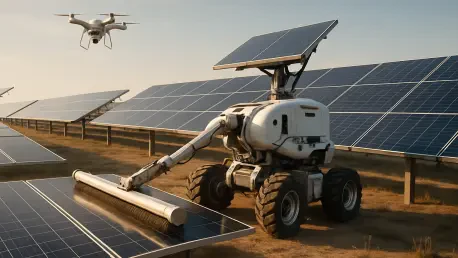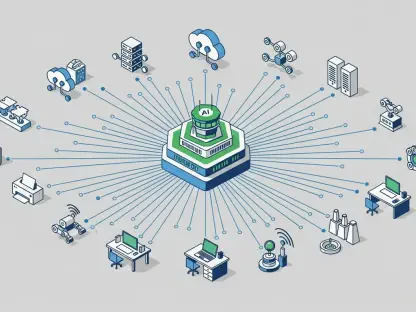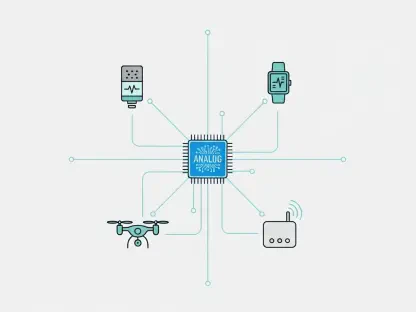The solar energy sector has been gaining momentum at an impressive pace, with advances in technology propelling it to the forefront of global energy solutions. Solar farm maintenance, however, remains a pivotal aspect influencing both performance and reliability. Leading companies have been striving to embed sophisticated technologies to ensure optimal functionality of solar installations. Among these, EDP emerges as a pioneer, employing automation to transform traditional maintenance practices in solar farms.
Overview of the Solar Industry
In an increasingly carbon-conscious world, solar power has become a cornerstone of renewable energy strategies. The current landscape of solar energy production underscores the necessity of robust maintenance to harness its full potential. Major industry players are constantly innovating to enhance energy capture and minimize losses, driven by consumer demand and sustainable practices. Technological advancements such as photovoltaic cells and energy storage solutions have significantly expanded market reach and efficiency.
With the solar industry’s rapid evolution, the role of technology cannot be understated. Companies leverage cutting-edge innovations to stay competitive and meet growing demands for clean energy. The expanding global commitment to green energy has intensified the focus on effective maintenance, underscoring the industry’s vital role in sustainable development.
Trends and Innovations in Solar Farm Maintenance
Emerging Technological Advances
Recent advancements in technology, including the Internet of Things (IoT), artificial intelligence (AI), drones, and robotics, have emerged as game-changers in solar farm maintenance. By enabling real-time monitoring and automated decision-making, these innovations facilitate proactive approaches to maintenance. Consumer behavior drives these technological shifts, with increased demand for efficient and sustainable energy solutions.
The proliferation of smart technologies has paved the way for more sophisticated solar farm operations. Manufacturers and energy providers are seizing the opportunity presented by these developments to optimize operations, reduce costs, and enhance overall efficiency. The integration of autonomous systems reduces human intervention and minimizes error, aligning with evolving market trends and consumer expectations.
Market Growth and Projections
Current market data paints a promising picture of solar energy’s trajectory, with continued growth anticipated over the next several years. Driven by increasing adoption rates and government incentives, solar power is poised for substantial market expansion. Industry forecasts are optimistic, predicting significant contributions from solar installations to global energy portfolios.
Analyzing industry performance indicators reveals upward trends in capacity and efficiency, reflecting technological prowess and strategic investments. As renewable energy policies solidify, solar energy’s market share is expected to surge, driven by advancements in maintenance practices and technology deployment. These projections suggest a bright future for solar energy, catalyzed by innovation and strategic planning.
Challenges in Solar Farm Operations
Navigating the complexities of solar farm operations entails addressing various technological, market, and regulatory challenges. The integration of new technologies often confronts obstacles related to compatibility and cost. Moreover, the energy market’s volatile nature adds layers of uncertainty in planning and investment strategies.
Innovative solutions are paramount in overcoming these challenges, demanding collaboration among industry stakeholders. Strategies to mitigate risks include investing in comprehensive training, adopting adaptive technologies, and maintaining regulatory compliance. Visionary approaches are central to surmounting these hurdles, ensuring sustained growth and resilience in the evolving energy landscape.
Regulatory Framework Influencing the Industry
The regulatory framework governing solar operations constantly evolves to keep pace with technological advancements and environmental mandates. Laws and standards shape the procedures and practices within the industry, influencing how companies conduct their operations. Compliance remains crucial, demanding adherence to both national and international guidelines.
Security measures and regulatory changes necessitate constant vigilance to ensure alignment with industry norms. The impact of these regulations extends beyond compliance, affecting strategic decisions and operational models. Companies that proactively adapt to regulatory shifts position themselves for success, leveraging compliance as a competitive advantage.
The Future of Solar Maintenance Technology
The trajectory of solar maintenance technology promises disruption of traditional models, heralding a new era of efficiency and innovation. Emerging technologies are poised to revolutionize maintenance practices, driving the industry toward smarter and more connected operations. Consumer preferences continue to steer this evolution, demanding cleaner energy and more sustainable practices.
As the global landscape shifts toward sustainable energy, innovations in solar maintenance will play a pivotal role in shaping future standards. Regulation, economic factors, and technological breakthroughs will influence this transformation, creating a dynamic environment ripe with opportunity for forward-thinking companies.
Conclusion and Recommendations
EDP’s innovative approach in automating solar farm maintenance symbolizes a significant evolution in energy management, achieving operational efficiency and cost-saving advancements. As observed, optimizing maintenance through automation not only enhances performance but also aligns with industry trends shaping the future of clean energy. Companies seeking to invest and grow in this market should leverage technology, embrace innovation, and remain adaptable to regulatory and market changes to capitalize on emerging opportunities.









